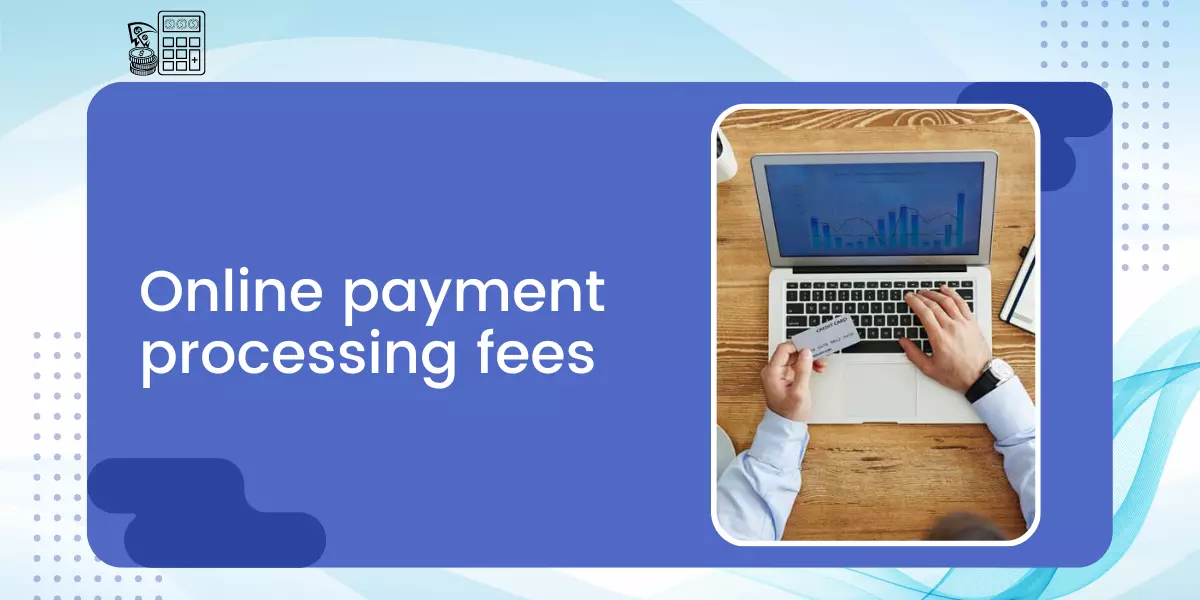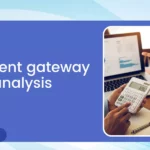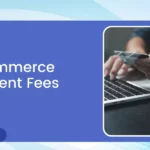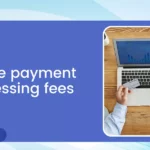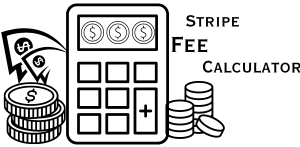Stripe, a leading payment gateway provider, offers tailored solutions to businesses through its Integrated and Customized packages. The Integrated package, widely utilised by businesses of all sizes, imposes a percentage fee on each successful transaction, accompanied by a flat fee for card or wallet transactions. While these fees remain consistent across all Integrated package users, additional factors influence the overall cost, which we’ll investigate shortly.
In contrast, the Customized package caters to larger enterprises, allowing for negotiated rates based on transaction volume and specific business needs. However, this article will focus on the Integrated offering, which forms the foundation for many businesses leveraging Stripe’s services.
To aid businesses in understanding and estimating their Stripe fees, we’ve developed the “Stripe Fee Calculator,” a tool designed to provide clarity and transparency regarding transaction costs. Whether you’re a small startup or an established corporation, our calculator can assist you in forecasting and managing your payment processing expenses effectively. Join us as we explore the intricacies of Stripe’s fee structure and unveil strategies for optimising cost efficiency within the Integrated package.
How are Stripe fees calculated?
Understanding how Stripe calculates fees is essential for businesses utilising their payment gateway services. Businesses can better manage their finances and make informed decisions with transparency and clarity in fee structures. Let’s investigate how Stripe determines its fees and the factors influencing transaction costs.
Card and Wallet Payments
When processing payments via cards or digital wallets, Stripe applies a percentage of the total transaction amount and a flat fee for each transaction. This fee structure ensures business consistency and predictability, regardless of transaction size or frequency.
The percentage fee typically ranges between 2.9% to 3.5%, depending on the region and currency involved. A flat fee, usually around $0.30 per transaction, covers processing costs.
For example, if a business processes a $100 transaction with a 3% transaction fee and a $0.30 flat fee, the total fee would be $3.30 ($3.00 + $0.30). Understanding these components allows businesses to estimate transaction costs and optimise their pricing strategies accordingly and accurately.
Wire, ACH Debit, or Credit Payments
Stripe employs a percentage-based fee structure for ACH debit or credit payments and wire transfers. However, it’s worth noting that these fees are capped, ensuring that they always stay within a certain limit. This provides businesses with predictability and cost control, even for larger transactions.
In addition to the percentage-based fees, other charges may apply depending on the specific services utilised. These fees could include additional processing fees or service charges tailored to the nature of the transaction.
Stripe fees are typically calculated as a combination of a percentage of the transaction value and a fixed amount. This dual approach ensures that fees remain proportional to the transaction size while still covering the operational costs associated with payment processing.
Now, let’s take a closer look at the specific breakdown of these Stripe fees, providing businesses with a comprehensive understanding of their payment processing costs.
Stripe processing fees: a complete guide
Understanding the intricacies of Stripe’s processing fees is crucial for businesses looking to optimise their payment processing strategies. With Stripe offering various services, each with its fee structure, navigating through these rates can seem daunting. In this comprehensive guide, we’ll break down the costs associated with Stripe’s services, clarifying the fees applied to different types of transactions. From online payments to subscriptions and beyond, we’ll dissect each service’s fee structure, empowering businesses to make informed decisions regarding payment processing needs.
Stripe Online Payments: A Breakdown of the Cost of Stripe
As businesses engage in online transactions through Stripe’s platform, they must grasp the critical merchant fees. In the following sections, we’ll delve into Stripe’s fee structure specifics, highlighting the charges incurred per transaction. By thoroughly understanding these fees, businesses can assess the overall cost of utilising Stripe’s services and strategise accordingly for financial optimisation.
| Transaction | Fees |
| Online card and wallet payments | 2.9% + $0.30. Plus 1% for international cards and/or 1% for currency conversion |
| In-person payments through Stripe’s Terminal product | 2.7% + $0.05. Plus 1% for international cards and/or 1% for currency conversion |
| Stripe ACH fee – Credit payments | $1 per payment |
| Stripe ACH fee – Direct Debit payments | 0.8% up to $5 max |
| Wire payments | $8 per payment |
| Checks | $5 per check |
| Klarna | pay in four installments: 5.99% + $0.30 |
| International payment methods: Various | $0.80 for iDEAL; 1.4% + $0.30 for Sofort, Bancotact or Giropay; 1.6% + $0.30 for EPS; 2.95% + $0.30 for Multibanco; 2.2% + $0.30 for Przelewy24; 0.8% + $0.30 (capped at $6) for SEPA Direct Debits. Plus 1% for currency conversion |
That’s not quite everything. Stripe offers a variety of additional products that we’ll mention in a minute. But those are the key ones you’re likely to need at first.
Stripe credit card fees (online)
When processing credit card transactions, Stripe applies a fee structure that mirrors that of debit card transactions: a percentage of the transaction amount, typically set at 2.9%, and a fixed fee of $0.30. This combined fee is levied on every transaction received, ensuring consistency and predictability for businesses.
Similarly, transactions made through digital wallets such as Apple Pay, Google Pay, or Alipay are subject to the same fee structure. Whether customers opt for traditional credit cards or digital wallet services, the fees remain uniform, providing businesses with a straightforward understanding of their transaction costs.
It’s important to note that these fees apply specifically to online transactions. In-person card transactions follow a different fee structure, which we’ll explore in more detail later in this guide.
Stripe ACH fees, wire fees and checks
Stripe charges 0.8% up to $5 for ACH transfers via Direct Debit. For other methods, ACH Credit payments cost $1, wire payments $8, and checks $5. These fees provide clarity and flexibility for businesses managing various payment options through Stripe.
| Transaction | Stripe fee |
| ACHA direct debit | 0.8% up to %5 |
| ACH credit payments | $1 |
| Wire payments | $8 |
| Checks | $5 |
Additionally, when Stripe automatically reconciles payments to outstanding invoices, a charge of $7 applies. Returned checks incur a fee of $15, while failed ACH Direct Debit payments are subject to a $4 charge. In disputed ACH Direct Debit payments, a fee of $15 is applied.
Stripe in-person fees – Stripe Terminal
Stripe, renowned for its digital prowess in online transactions, extends its services to businesses with physical points of sale through Stripe Terminal. This robust system facilitates in-store payments seamlessly.
Stripe Terminal applies a fee of 2.7% and an additional $0.05 charge for each successful card transaction in person. It’s important to note that businesses must invest in card readers, priced at $59 or $249, to leverage Stripe Terminal’s capabilities fully.
Furthermore, Stripe offers customised options tailored to the needs of larger enterprises, ensuring scalability and flexibility in payment processing solutions.
Stripe international payments
Stripe facilitates international payments across numerous countries, supporting over 135 currencies to cater to global transactions. However, it’s important to note that international transactions come with additional fees.
When a customer pays with an international card, an extra 1% charge is incurred. Another 1% fee is also applied if the transaction necessitates currency conversion.
Alternatively, businesses can opt for specific payment options that are popular in various regions. For instance, SEPA Direct Debits, prevalent in the European Union, incur a fee of 0.8% plus $0.30 per transaction, capped at $6. Sofort, popular in Europe, carries a fee of 1.4% plus $0.30, while Przelewy24, targeting the Polish market, entails a fee of 2.2% plus $0.30 per transaction.
By offering a diverse range of payment options tailored to specific regions, Stripe ensures businesses can effectively navigate the complexities of international transactions while catering to the preferences of their global customer base.
Stripe fees for refunds
When issuing refunds through Stripe, the process is straightforward: funds are deducted from your Stripe balance or withdrawn from your linked bank account if insufficient funds are available within Stripe.
However, it’s important to note that fees may apply when refunding a charge, depending on your fee schedule. Notably, Stripe does not refund the processing fees from the original transaction in the case of a refund.
When a transaction is disputed by a customer, resulting in a chargeback, a fee of $15 is imposed. This occurs when a customer questions a payment with the card issuer and potentially contests the transaction, leading to a dispute resolution process. Such disputes can have financial implications for businesses and are commonly called chargebacks.
Stripe volume pricing
Stripe offers volume pricing discounts through its Customized pricing package, which is tailored to individual businesses. These discounts are negotiated directly with Stripe, allowing businesses to optimise payment processing costs based on their transaction volume and specific needs.
In addition to volume discounts, businesses may also have the opportunity to negotiate country-specific rates or receive discounts for utilising a range of products offered by Stripe.
To explore volume pricing options and discuss potential discounts, businesses are encouraged to contact Stripe directly to initiate negotiations and tailor a pricing package that aligns with their requirements and objectives.
Stripe pricing for non-profit organisations
Non-profit organisations may benefit from Stripe’s special pricing, particularly if they primarily use Stripe to accept donations. Organisations must have non-profit status to qualify for Stripe’s non-profit pricing and intend to process at least 80% of donation payments using Stripe.
It’s important to note that this pricing may not be applicable if a significant portion of the payment volume involves activities such as ticket sales, membership fees, or tuition payments. The focus should primarily be on charitable donations.
If your organisation meets these criteria and wishes to explore non-profit pricing options with Stripe, contacting Stripe directly to discuss potential discounts is recommended.
What other fees might Stripe have?
Stripe provides several supplementary products that could prove beneficial, each with its unique fee structure. Apart from Stripe Terminal, these offerings include Stripe Connect, Stripe Billing, Stripe Atlas, Stripe Radar, Stripe Sigma, Stripe Issuing, and Stripe Payments for Platforms. It’s essential to note that fees vary across these products, so businesses should consider their specific needs and budget when selecting the most suitable option.
1. Stripe Billing
Stripe Billing streamlines the process of sending bills to customers, covering subscription payments and invoices alike. Utilising an API setup, it offers a suite of features, including coupon management, free trial support, and automated failed payment notifications.
For the “Starter” package, Stripe Billing incurs a fee of 0.5% on recurring charges. Meanwhile, the “Scale” package, tailored for more advanced integrations, commands a fee of 0.8% or higher. While the Starter package may suffice for many users, it’s important to note that certain advanced features, such as invoice auto-reconciliation, are exclusive to the Scale package.
2. Stripe Connect
Stripe Connect offers extensive integration capabilities for businesses, enabling seamless management of marketplaces, seller payouts, and platform operations. Stripe Connect facilitates marketplace development and international payments by leveraging programmable APIs and a suite of tools.
Stripe Connect has three models: Standard, Express, and Custom. The Standard model does not entail platform-specific fees. In contrast, the Express model incurs a charge of $2 per monthly active account, along with Stripe payout fees of 0.25% plus $0.25 per payout sent. The Custom package carries the same fees but offers customisable features tailored to specific business needs.
3. Stripe Radar
Stripe Radar is a robust fraud protection tool that harnesses machine learning to detect potential instances of fraud. It charges $0.05 per transaction screened, although this fee is waived for users on the standard pricing scheme.
Stripe offers Radar for Fraud Teams for advanced fraud prevention needs, priced at $0.07 per transaction screened or $0.02 alongside standard pricing. This option provides enhanced control and customisation features, including managing block and allow lists.
Additionally, Stripe Radar offers Chargeback Protection, automatically covering disputed amounts and dispute fees without requiring evidence. This service incurs a fee of 0.4% per transaction.
Given that there’s no additional fee for the basic Radar option alongside a standard Stripe package, it presents a compelling option for businesses seeking robust fraud protection measures.
4. Sigma
Stripe Sigma offers valuable business insights using SQL queries, quickly answering performance-related questions. Businesses can easily extract meaningful data with pre-built query templates for simplified usage.
Pricing for Stripe Sigma operates on a sliding scale based on the number of charges per month. Charges start at $0.02 for low volumes and can increase to $1.4 for over 5,000 monthly charges. Additionally, an infrastructure fee ranging from $10 to $100 applies. For volumes exceeding 50,000 monthly charges, businesses are advised to contact sales for customised rates.
5. Atlas
Stripe Atlas simplifies the daunting task of launching a startup by handling essential steps such as company registration in Delaware, drafting legal documents, and obtaining a Tax ID number. It also provides tools to facilitate stock issuance to founders.
The cost for Stripe Atlas is a one-time setup fee of $500. However, it’s important to note that this fee covers only the initial setup, and additional costs are incurred to maintain the business established by Stripe. For example, annual expenses include at least $225 for filing taxes in Delaware, a $100 fee for the Delaware registered agent, and $250 for corporate tax preparation.
6. Issuing
Stripe Issuing allows businesses to issue virtual or physical cards via Connect, with a fee of $0.10 for a virtual card or $3 for a physical one. Initially, there’s no fee for the first $500k in transactions on the card, but after that, transactions incur a charge of 0.2% plus $0.20.
For international payments, additional fees apply at the same rate as elsewhere, and a $15 fee is charged for lost disputes on issued cards.
While Stripe offers a suite of valuable services for businesses, it’s important to note that each service incurs costs. Given that many fees are transaction-based, it’s prudent for businesses to evaluate the cumulative impact of these fees carefully.
Conclusion
While online payment processing fees are an inevitable aspect of business transactions, businesses must understand and consider these costs carefully. With various payment processors offering different fee structures and pricing models, businesses must assess their needs and transaction volumes to choose the most cost-effective solution.
Whether it’s Stripe, PayPal, Square, or another provider, evaluating factors such as percentage fees, flat fees, and additional charges for international transactions or refunds is crucial. Moreover, considering the impact of these fees on profitability and overall business operations is imperative.
By conducting thorough research, comparing fee structures, and leveraging tools like Stripe Fee Calculators, businesses can optimise their payment processing strategies to minimise costs and maximise revenue. Ultimately, staying informed about online payment processing fees and making informed decisions can contribute significantly to businesses’ financial health and success in today’s digital landscape.
FAQs on Online Payment Processing Fees:
What is an online processing fee?
An online processing fee is a charge levied by payment processors for handling online transactions. It covers the cost of processing payments securely and efficiently.
What is the transaction fee for online payments?
The transaction fee for online payments typically includes a percentage of the transaction amount plus a fixed fee per transaction. This fee varies depending on the payment processor and the specific terms of the agreement.
What are payment processing fees?
Payment processing fees refer to the charges incurred by merchants for processing credit card, debit card, or other electronic payment transactions. These fees are typically imposed by payment processors or financial institutions.
Who charges processing fees?
Processing fees are charged by payment processors, such as Stripe, PayPal, Square, banks, and other financial institutions involved in facilitating electronic payments.
Why pay processing fee?
Payment processing fees cover the cost of providing secure and efficient payment processing services, including transaction processing, fraud prevention, and customer support.
Does GPay charge for transactions?
Yes, Google Pay (GPay) may charge fees for certain transactions, such as transferring money from your GPay account to a bank account.
What are the charges for GPay?
The charges for GPay transactions may vary depending on factors such as the type of transaction and the region. Users should refer to GPay’s terms and conditions for specific fee details.
Why is my UPI limit 5000?
The UPI (Unified Payments Interface) limit of 5000 rupees may be set by your bank or the National Payments Corporation of India (NPCI) as a default limit for certain transactions. You may be able to increase this limit by contacting your bank.
How do I avoid payment processing fees?
You can minimize payment processing fees by comparing fees from different payment processors, negotiating lower rates based on transaction volume, choosing the most cost-effective payment methods, and implementing fraud prevention measures.
Is the processing fee compulsory?
Yes, processing fees are typically mandatory for merchants using payment processing services. However, the specific fees may vary depending on the terms of the agreement with the payment processor.
Who pays the 3% credit card fee?
The 3% credit card fee is typically paid by the merchant accepting the credit card payment. However, some merchants may pass this fee to customers through surcharges or convenience fees.
How to calculate 3% card fee?
To calculate the 3% card fee, multiply the transaction amount by 0.03 (which represents 3% as a decimal). For example, if the transaction amount is $100, the 3% card fee would be $3.
What is a 3% fee on a credit card?
A 3% fee on a credit card refers to the percentage of the transaction amount the merchant charges for accepting the credit card payment. This fee covers the cost of processing the transaction and may vary depending on the merchant’s agreement with the payment processor.
